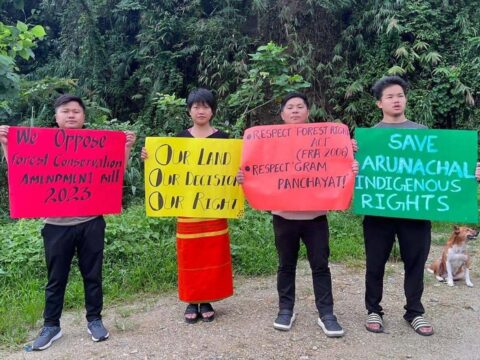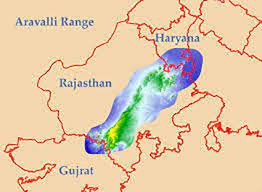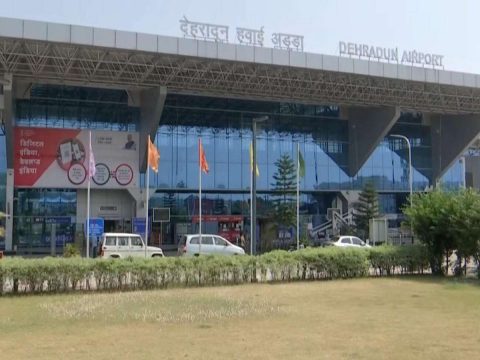PETITION
6 January 2022.
To
Chairperson & Members
NCR Planning Board, Ministry of Housing & Urban Affairs
Government of India, New Delhi-110003.
Subject: Objections to the dilution of the Natural Conservation Zone provisions in the ‘NCR Draft Regional Plan 2041’ and suggestions to protect the Aravalli Hills (Aravallis) and other natural ecosystems.
Dear NCR Planning Board Chairperson & Members,
Greetings from the India Greens Party!
On behalf of the India Greens Party, I am writing to you on a very critical matter.
India is the fifth most vulnerable nation in the world to climate change. It is the responsibility of our planners and government authorities to strengthen laws and plans to protect our carbon sinks, green lungs and critical water recharge zones like our mountain ecosystems, wetlands, forests, rivers, lakes, water bodies etc instead of diluting provisions that give these carbon sinks protection under the law.
OBJECTIONS AND SUGGESTIONS FOR THE NEW NCR DRAFT REGIONAL PLAN 2041:
1) Replacement of ‘Natural Conservation Zone’ with ‘Natural Zone’:
Objection (a): According to the Draft Regional Plan 2041, the ‘Natural Zone’ will comprise natural features such as mountains, hills, rivers, water bodies and forests which are notified for conservation under central or state laws and recognized as such in land records. The relevant provision states that, “The natural features shall be such as are notified for preservation or conservation under the relevant Central or State laws and recognized as such in the land records over time.”
In contrast, the NCR Regional Plan 2021, which is currently in force since 2005 – was crystal clear that ALL Aravallis, forest areas and all water bodies were to be included in the ‘Natural Conservation Zone’ (NCZ). The relevant description of the NCZ in the NCR Regional Plan 2021 is as follows: “The major natural features, identified as environmentally sensitive areas are the extension of Aravalli ridge in Rajasthan, Haryana and Delhi, forest areas, the rivers and tributaries of Yamuna, Ganga, Kali, Hindon and Sahibi, sanctuaries, major lakes and water bodies such as Badkal lake, Suraj Kund and Damdama in Haryana Sub-region and Siliserh lake in Rajasthan etc. These areas have been demarcated as Natural Area Conservation Zone in the Regional Plan-2021”
The replacement of the ‘Natural Conservation Zone’ under the 2021 Regional Plan with ‘Natural Zone’ in the Draft Regional Plan 2041, by dropping the term “Conservation” is a regressive step as it signals that conservation is no longer important in the NCR Regional Plan. All existing Sub-Regional Plans and Master Plans are already using the term’ Natural Conservation Zone’ (NCZ) and changing the term now will lead to further confusion in the implementation of these plans.
Objection (b): The regional plan is a guiding document for sub-regional plans that states develop. But if the guiding document itself is diluted, then obviously states can dilute further. The 2021 Regional Plan was very clear and detailed in defining and demarcating the areas under the ‘Natural Conservation Zone’. In the 2021 plan, the ‘Natural Conservation Zone’ covered all areas in the entire Aravalli range in Delhi, Haryana and Rajasthan including hills, forest areas, rivers & tributaries, major lakes, water bodies and ground water recharging areas irrespective of the status of their land records. Most forests in south Haryana, which includes the Aravalli region, are not notified forests and these are also not recorded as ‘forest’ in the revenue records. But after a 1996 Supreme Court judgement, which expanded the definition of ‘forest’, these areas are now treated as ‘forest’ and hence qualify to be conserved. However, under the new Draft Regional Plan 2041, nearly 70-80% of the current ‘Natural Conservation Zone’ area under the 2021 Regional Plan will not be eligible to be part of the ‘Natural Zone’ under the new Draft Regional Plan 2041. This will have adverse implications for the air quality, groundwater recharge, forest cover and wildlife habitat in Delhi, Gurgaon, Faridabad as well as the rest of South Haryana and Rajasthan.
Suggestion (a): We strongly suggest that term “Natural Conservation Zone” used in 2021 NCR Regional Plan be retained in the new Regional Plan 2041 and the word conservation not be dropped from the same.
Suggestion (b): We further suggest that the definition and provisions for the “Natural Conservation Zone” as present in the Section 17.4.2 of the 2021 NCR Regional Plan be retained in toto/as it is, in the new Regional Plan 2041.
2) Restriction of natural areas to only those areas that are notified under central/state acts and recognized in revenue records:
Objection: The new NCR Draft Regional Plan 2041 restricts the natural features that will have the protection to only those features that are (a) notified under state/central acts AND are also (b) recognized in revenue records. This is an unduly harsh restriction that will exclude over 80% of forests and Aravallis and even rivers, flood plains and waterbodies – as very few of them meet both the criteria proposed – of notification and presence in revenue records. In fact, many do not meet either criterion. For example, most Aravalli hill areas in Haryana are neither notified as such, and are mentioned in the revenue records as ‘Gair Mumkin Pahar’ and ‘Bhood’. Similarly, most of the forest cover in Haryana is neither notified as ‘forest’ nor mentioned as ‘forest’ in the revenue record. Almost 50,000+ acres of the Aravallis in Haryana have not yet been notified as deemed forests under any law.The Honourable Supreme Court has repeatedly directed the state of Haryana to identify forests as per dictionary meaning in Godavarman (1996), Lafarge (2011) judgements of the Supreme Court but the government has failed to carry out this exercise.Therefore, such restrictive eligibility criteria will exclude a major chunk of the Aravallis and the natural features from protection under the new NCR Draft Regional Plan 2041 and leave them open to the ravages of real estate etc.
Suggestion: The qualification provided should be kept inclusive as it is in the NCR Regional Plan 2021 and not made restrictive as in the new Draft Regional Plan 2041.
3) Identification of ‘Natural Zones’ using revenue records and ground truthing exercises:
Objection (a): According to the new Draft Regional Plan 2041, “Natural Zones” will be identified by the states using revenue records and ground truthing exercises. This is very troubling as the state governments in the past have tried to dilute the definition of the Aravallis. For instance, a state-level committee headed by the Haryana Principal Secretary, Town and Country Planning in a meeting held in August 2021 for “Ground-Truthing of Natural Conservation Zone” in the Haryana sub-region of India’s National Capital Region stated that revenue records of Faridabad district only identify “Gair Mumkin Pahar” (i.e. uncultivable hilly areas) and do not make any mention of the term “Aravalli”. The committee has asked officials to identify the areas under Aravallis on the basis of a 1992 notification of the Union Ministry of Environment, Forest and Climate Change (MoEFCC) that only covers the areas of the old Gurgaon district (currently Gurugram and Nuh districts), thereby wiping out the existence of 20,000 acres of Aravalli forests in Faridabad.
Objection (b): For natural entities, you don’t need a notification, and the government must understand this. There is no notification saying ‘this is the Himalaya’ or ‘this is the Brahmaputra’. The state of Haryana is yet to complete the exercise of defining and marking forest land according to the Supreme Court’s 1996 judgment in T.N. Godavarman Thirumulpad v. Union Of India which states that: “The word ‘forest’ must be understood according to its dictionary meaning.”
Just because the Haryana government has not conducted the exercise to identify forests does not mean that the area does not have forests.
Suggestion (a): The term ‘forest areas’ must be included in the new Draft Regional Plan 2021 and must cover all three categories of forest – notified, recorded, or deemed as per dictionary meaning, in compliance with the Godavarman (1996) and Lafarge (2011) judgements of the Supreme Court.
Suggestion (b): All Aravalli hills and forests and other natural ecosystems such as wetlands, rivers, lakes, water bodies etc irrespective of whether they are notified or not or mentioned in the revenue records or identified in ground truthing exercises, must get protection under the new Draft Regional Plan 2021.
4) Exclusion of term “Aravalli”:
Objection: The term “Aravalli” was present in NCR Regional Plan 2021 and was part of the Natural Conservation Zone, but has been excluded from Draft Regional Plan 2041.
Suggestion (a): The term “Aravalli” must be restored and included as an important zone for conservation in the new Draft Regional Plan 2041.
Suggestion (b): The term “Gair Mumkin Pahar” (i.e. uncultivable hilly areas) must be included in the new Draft Regional Plan 2041 as it is one of the terms that covers Aravalli hills in the revenue records in Delhi, Haryana and Rajasthan.
5) Exclusion of “Forest Areas”:
Objection: The term “Forest areas’ was included in NCR Regional Plan 2021, but has been excluded from the Draft Regional Plan 2041.
Suggestion (a): The term “Forest areas’ which was included in the NCR Regional Plan 2021, but has been excluded in the Draft Regional Plan 2041 should be restored back.
Suggestion (b): It should be further clarified in the new Draft Regional Plan 2041 that ‘forest areas’ include notified forests, recorded forests, and other forests. This is because the Supreme Court has repeatedly directed the states, including Haryana to identify forests that are notified under any act, or recorded as forest in government records, or simply meet the general dictionary meaning of forests. The term ‘forest areas’ must cover all three categories of forest – notified, recorded, or deemed as per dictionary meaning, in compliance with the Godavarman (1996), and Lafarge (2011) judgements of the Supreme Court.
6) Decline of forest area and deletion of forest cover target of 10%:
Objection: Area under forest has declined from 4.02% reported in NCR Regional Plan 2021 to 3.27% under Table 3.1 in section 3.2.2 of Draft Regional Plan 2041. Even the target, “total forest cover proposed to be 10% of the total area of the region”ofthe NCR Regional Plan 2021 has been dropped from Draft Regional Plan 2041. This is a regressive step.
Suggestion: Target of 10% total forest cover for the NCR must be restored and included in Draft Regional Plan 2041.
7) Water bodies:
Objection: The term “water bodies created by the action of nature” is unduly restrictive in the new Draft Regional Plan 2041. There are very few waterbodies created exclusively by the action of nature. Most of the waterbodies in the NCR have a human element in their history. Famous lakes such as Badkhal lake, Surajkund, Damdama lake in Haryana all have bunds and excavation and have modified the “action of nature”. Most village ponds are in the form of ‘johads’, but may not have been strictly created by the “action of nature”, or at least that may not be apparent due to maintenance work done by humans over time including excavation and bunding.
Suggestion: The qualification “created by the action of nature” in Draft Regional Plan 2041 should be deleted.
8) Rivers, Tributaries, Flood plains and Flood prone areas
Objection: NCR Regional Plan 2021 included rivers, their tributaries and their flood plains in the Natural Conservation Zone and even named some rivers such as Yamuna, Ganga, Kali, Hindon and Sahibi. However, the Draft Regional Plan 2041 has dropped the coverage of tributaries and also dropped the flood plains. This is objected to as the rivers, the tributaries and their flood plains are all crucial for the water security and the protection of the riverine floodplain habitat is critical for protection of riverine biodiversity.
Suggestion: Conservation of rivers and their tributaries and flood plains and flood prone areas must be included back in Draft Regional Plan 2041.
9) Earmarking of wastelands and village commonlands for forest cover:
Objection: NCR Regional Plan 2021 stated in Section 17.4.2 that: “All wastelands identified in the existing Land Use 1999 and proposed Land Use Plan 2021 i.e. irrigation canals, drains, roads, railway lines and village common lands are proposed to be brought under forest cover.”However, this provision has been deleted from the Draft Regional Plan 2041. Citizens object to this deletion.
Suggestion: Citizens demand that the above provision be restored and included in the new Draft Regional Plan 2041.
WHY PROTECTING THE ARAVALLIS IS CRITICAL FOR INDIA’S NATIONAL CAPITAL REGION AND NORTH INDIAN STATES?
Delhi-NCR and the entire North Indian belt is already one of the most polluted and water stressed regions in India. As global warming and climate change intensify, this region will get more impacted. Air pollution of India’s National Capital Region will become worse if the Aravallis are destroyed as these are the green lungs and only barrier protecting millions of people living in NCR cities and South Haryana from the sandstorms coming from the Thar desert. Aravallis with their natural cracks and fissures have the potential to put 2 million litres of water per hectare in the ground every year and thus act as a critical water recharge zone for the water starved Gurgaon, Faridabad, Delhi, other NCR cities, South Haryana and Rajasthan where the extraction is 300% more than the recharge and groundwater levels are dangerously low.
If the Aravallis are left out of the ‘Natural Zone’ in the new Draft Regional Plan 2041, these will get opened up for real estate, mining, urbanisation and NCR, South Haryana and Rajasthan will lose its lifeline for clean air and water security.
We hope that the NCR Planning Board and the Ministry of Environment, Climate Change and Forests will take note of the above objections and act in the interest of the citizens and the wildlife and strengthen the NCR Draft Regional Plan 2041 based on the above suggestions.
With Green wishes,
Rajendra Minz
Co-President, India Greens Party.
Website: www.indiagreensparty.org
Mobile phone: +91-9425584077




